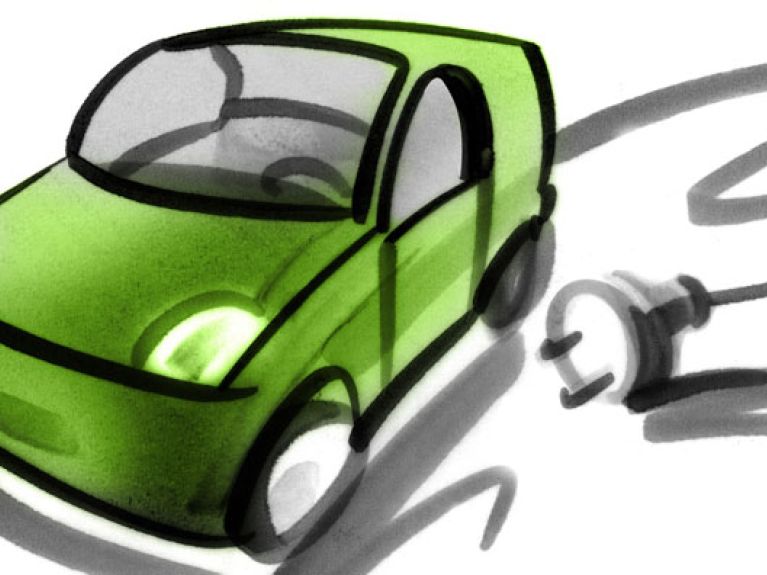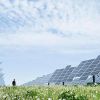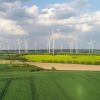What you should know about the energy transition
Dr. Patrick Graichen, Director of the renowned Agora think tank in Berlin, answers 10 questions about the energy transition.

1. Germany is realizing its “Energiewende”. What does that involve in concrete terms?
“We use the term ‘Energiewende’ to describe the transition of the German energy supply system from oil, coal, gas and nuclear power towards renewable energies. By 2050 at the latest, at least 80% of the electricity supply and 60% of the entire energy supply is to originate from renewable energy sources. Initially, all nuclear power plants are to be shut down by 2022 and then 40 to 45% of the electricity supply is to stem from renewable energies by 2025 (today: 25%). Both these targets enjoy great support among policymakers and in society as a whole.”
2. Which technologies are at the centre of the energy transition?
“The most advantageous renewable energies that are available to us are wind power and solar electricity. As a result of the growth of these industries and the technological development of the past 20 years the real production costs of wind and solar energy in Germany have now reached roughly 6 to 9 cents per kilowatt hour. That also corresponds to the electricity generation costs of new coal- and gas-fired power plants and is significantly cheaper than electricity from new nuclear power plants. Wind and solar are therefore at the heart of the energy transition.”
3. Can an industrialized nation like Germany rely solely on the sun and wind as sources of energy? Or must we reckon with electricity outages?
“Germany has the lowest power outage rate in Europe and things are meant to stay that way. That’s why wind and solar energy must also be supported by backup technologies that can supply electricity at times when there is insufficient wind or sun. Initially, for the next few decades, that will involve coal- and gas-fired power plants. They will have to generate electricity flexibly when demand is greater than the supply from renewable energies. In the long term, however, other renewable energy sources (such as hydro power, biomass and geothermal energy) and electricity storage systems will also have to fulfil this task.”
4. Wind and solar energy are often not needed at the places they are produced. Which technological solutions are available here?
“Existing electricity grids are robust and if managed efficiently can transport much more renewable energy. Some parts of Germany already have a share of roughly 40% wind and solar energy, and this has been achieved without any major strengthening of the grid. Initially, therefore, grid development is not a bottleneck for the further expansion of renewable energies. In the medium term, however, we will need new high-power networks that deliver wind electricity from the North Sea coast to locations with less wind. A second option is to install wind and solar plants where the most electricity is consumed – there is still a lot of untapped potential here.”
5. How can Germany answer the reservations some of its neighbours have about the transition to renewables?
“The energy transition is the answer to two challenges: on one hand, fossil fuel resources such as coal, oil and gas are becoming increasingly scarce; on the other, our societies are threatened by climate change. Renewable energies are the technological solution to both problems – and furthermore they are very cost-effective domestic energy sources. The changeover to a low-carbon economy on which we have reached joint agreement in Europe will inevitably lead to significantly more renewable energies, since they are much cheaper than new nuclear power plants or coal-fired plants with carbon capture and storage. The decisive thing now is that Germany engages in a dialogue with its neighbours on the best way to successfully integrate wind and solar plants into the electricity system.”
6. What incentives must policymakers create to realize the energy transition and meaningfully regulate the electricity market?
“The Renewable Energy Sources Act (EEG) of the year 2000 stimulated competition between different technologies. This contest has been won by wind power and solar electricity. In the second phase that is now beginning it will be important to set up a secure and cost-effective energy system based on renewable energies. This means that support must now be focused on wind and solar plants. At the same time the legal foundations of the electricity market have to be reorganized in such a way that coal- and gas-fired power plants, electricity demand and electricity storage systems respond flexibly to electricity generation from wind and solar sources and thereby together guarantee security of supply.”
7. Germany is a leader in the field of environmental technology – will the energy transition become a major driver of innovation?
“The energy transition is a project of the future for German industry. After all, renewable energies will become a global mass market. If electricity from wind and solar energy plants already costs roughly the same as electricity from new coal- and gas-fired power plants, then it will be even cheaper in the many regions of the world that have more sun and wind available. To that extent, the energy transition is creating a large number of innovations for which there will be global demand in the coming years – not only in the energy sector, but also in the fields of information and communication technology and materials technology.”
8. The transition to renewables will cost billions. How can it be financed at acceptable prices for consumers? And how do the benefits measure up to the costs?
“Germany spends over 80 billion euros a year on imports of coal, oil and gas. In coming years this sum will gradually be replaced by domestic value creation in the renewable energies sector – with correspondingly positive effects on growth and employment. The ratio of costs and benefits is therefore clearly positive. Although in the short term the energy transition will lead to additional investments and therefore also to higher costs for consumers, since electricity costs only make up 3% of the total expenditure of private households, overall the costs will be bearable.”
9. Reducing electricity consumption increases sustainability. How important is energy efficiency for the energy transition?
“Energy efficiency is the second pillar of the energy transition alongside the expansion of renewable energies. Every kilowatt hour of electricity that is not consumed saves fossil-fuel resources and the construction of power plants and grids. That’s why it’s important that more is done in this area. Electricity consumption in Germany has decreased slightly since 2007. Yet we still have a long way to go to reach the target, originally formulated in the government energy strategy, of reducing electricity consumption by 10% by 2020. Policymakers must agree additional measures here.”
10. What role does the phasing out of nuclear power play?
“The energy transition is often presented as a reaction to the 2011 reactor disaster in Fukushima. However, it already commenced much earlier: support for renewable energies began in Germany in 1990. It was then firmly anchored in the Renewable Energy Sources Act in 2000. In the same year the government of the time agreed the phasing out of nuclear energy by 2022 with German energy suppliers. The Merkel government’s energy policy decisions of 2011 are therefore part of a long tradition of restructuring the energy supply system – away from coal, oil, gas and nuclear and towards the sustainable energy sources of wind, sun, hydro, biomass and geothermal energy.”

